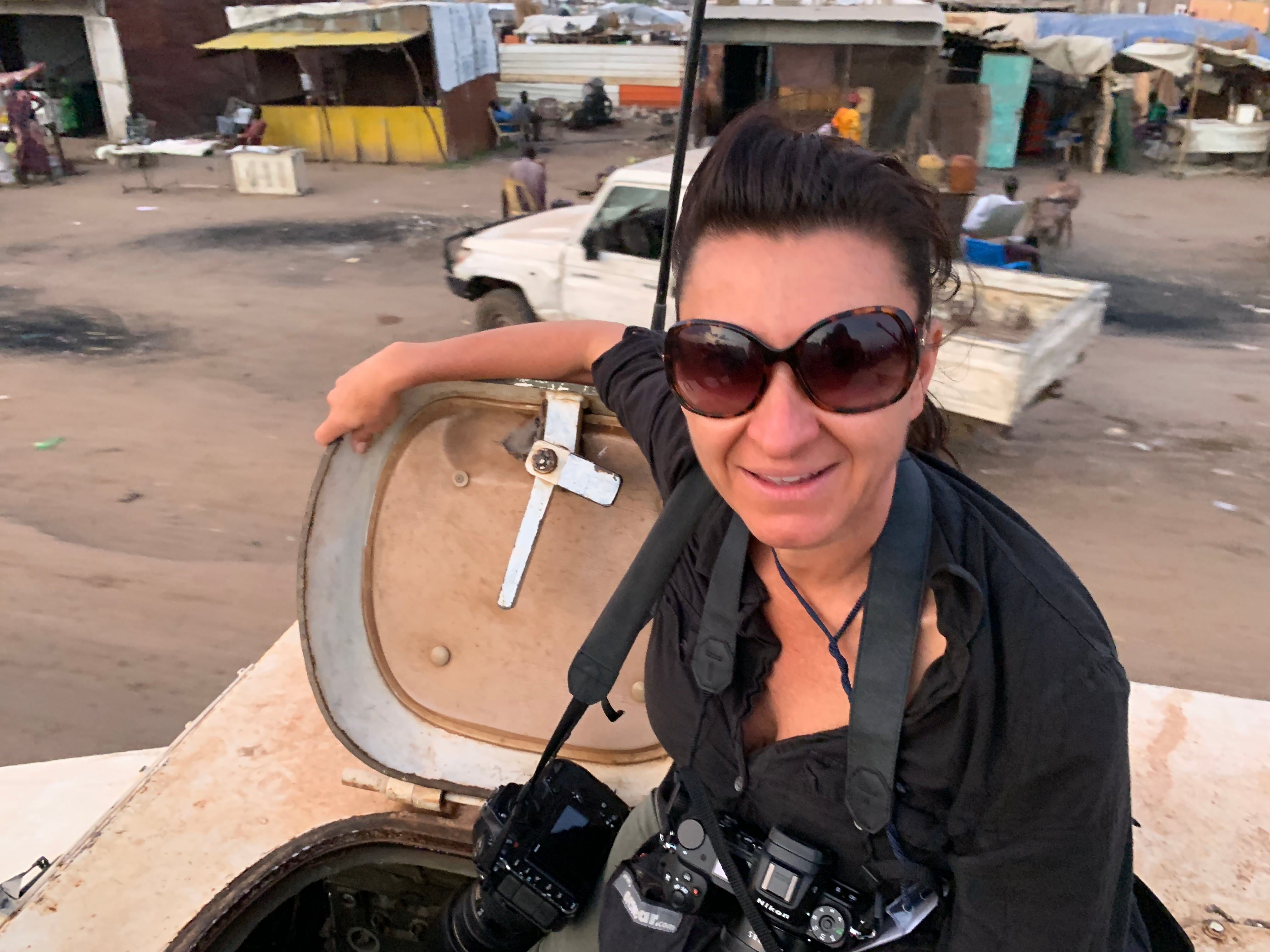Photojournalist Lynsey Addario has covered conflict all over the world for more than 20 years, including in Afghanistan, Iraq, and Africa.
But her most recent project for National Geographic’s November issue titled “Women: A Century of Change” was the first time women in the military — both in the U.S. and elsewhere — took the spotlight in her storytelling.
“It was unique in that my focus was on covering women,” Addario told the Military Times about the project. “So in this situation, I was looking specifically for women in different situations,” Addario added that she aimed to cover the spectrum of women in uniform, from those still in training to experienced commanders who’ve served in combat for decades.
In addition to highlighting women all over the world, women also photographed and wrote all content for the November National Geographic issue.
Addario, who is based out of London, featured five countries in the project: the U.S.; Syria; Israel; Colombia; and South Sudan.

Her piece, titled “On today’s battlefields, more women than ever are in the fight,” captures the contributions of women serving in militaries all over the world, and how they are increasingly tackling active roles.
In the U.S., women have been included in the military after the Army Nurse Corps was first established in 1901. Roles such as aviation and naval combat later opened up to women and most recently, women became eligible for ground combat jobs in 2016.
Although women are moving into roles previously open only to men, Addario said women serving around the world still regularly feel pressure to prove themselves in ways men don’t need to.
“There’s always sort of that challenge for a woman to be able to prove how tough she is, to prove that she can fight as well as or keep up with men,” Addario said.
Addario says she understands because she senses the same doubts when she shows up the first day for an embed about whether she can keep up, or if she will get scared.
In the National Geographic piece, Addario quotes the commander of female Marine recruits at Parris Island in South Carolina, Marine Lt. Col. Misty Posey saying that although women “learn weakness,” they can also “unlearn it.”
For example, Posey said that she sees female Marines come out of training just as self-assured as their male counterparts.
Addario elaborated and said she believed Posy claimed women can “unlearn weakness” because when a woman is told she has the strength to do something “she will often believe in herself more than if you start at a point of weakness.”
“I think the unlearning weakness has to do with, if you’re conditioned, if you’re always told that women are the weaker sex and that women can never carry a comrade over their shoulder...if that becomes ingrained into your psyche, you start to think, ‘Well maybe that’s true’ and that’s not the case,” Addario said.
So how do women in the military push back on these stereotypes and overall stigma that they are weaker?
“They take their job very seriously,” Addario said. “They don’t want their gender to play into their job.”
“I think that to them it is very important to go the extra mile to do everything with perfection,” Addario added.
National Geographic also highlighted statistics about women in the U.S. military showing that 19 percent of women in the military are officers, while 18 percent of men in the military are officers. The data was pulled from sources including the Defense Manpower Data Center.
Even so, women in the U.S. military are largely outnumbered. According to 2018 statistics from the Department of Defense, 16.2 percent of the U.S. military’s active duty force are women.
The Air Force has the most women out of all the services, while the Marine Corps has the fewest. Approximately 20 percent of the Air Force is composed of women, in comparison to roughly 9 percent of the Marine Corps.
Addario says she hopes her work sheds light on the contributions of female service members worldwide.
“I think people don’t realize that there are women on the front lines and in these very tough roles and positions around the world,” Addario said. “I think it’s important to have women out here and to be role models for other women.”




